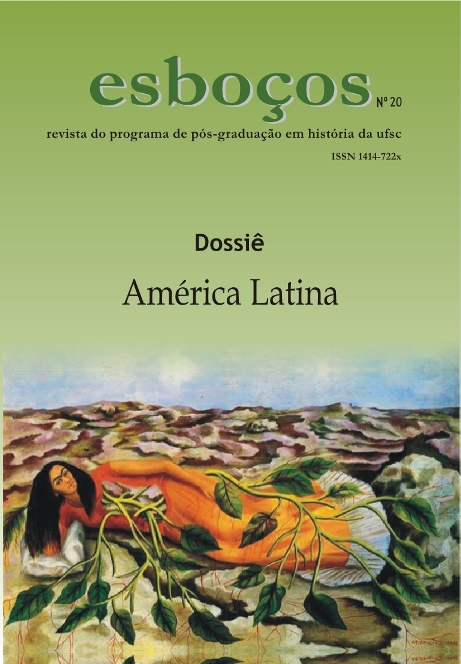Representações populares e de elite na Argentina e no Brasil do Entre-Guerras a partir de Carlos Gardel e Carmen Miranda
DOI:
https://doi.org/10.5007/2175-7976.2008v15n20p21Abstract
In the present article, we intend to analyze the popular and elite identities representations into the songs, images and performance of Carlos Gardel and Carmen Miranda. The hypothesis is that those artists were important in the process of negotiation and the Argentinean and Brazilian national identities-building; concerning their performance as interpreters in their countries, and the advertising over their works which were purchased by a large number of consumers in an emergency nationalism between the Wars. In their songs, images and performance, there were also popular representations which were associated with national identity. This association is the theme of study.Downloads
Published
2009-03-21
How to Cite
Wasserman, C., & Kerber, A. (2009). Representações populares e de elite na Argentina e no Brasil do Entre-Guerras a partir de Carlos Gardel e Carmen Miranda. Esboços: Histories in Global Contexts, 15(20), 21–46. https://doi.org/10.5007/2175-7976.2008v15n20p21
Issue
Section
Special issue
License
Esboços: histories in global contexts adopts an Open Access policy and it is licensed under a Creative Commons Attribution 4.0 International License (CC-BY 4.0). Authors will be asked to sign an open access license agreement before publication.
Authors who publish with this journal agree to the following terms:
- Authors grant the journal Esboços: histórias em contextos globais (ISSN 2175-7976) right of first publication with the work simultaneously licensed under a Creative Commons Attribution 4.0 International License (CC-BY 4.0).
- This license allows users to remix, transform, and build upon the material, on the condition of giving acknowledgement of the work's authorship and initial publication in this journal.
- 3.Authors are able to enter into separate, additional contractual arrangements for the non-exclusive distribution of the journal's published version of the work (e.g., post it to an institutional repository or a personal website, or publish it as a book chapter or a translation).

This work is licensed under a Creative Commons Attribution 4.0 International License.







